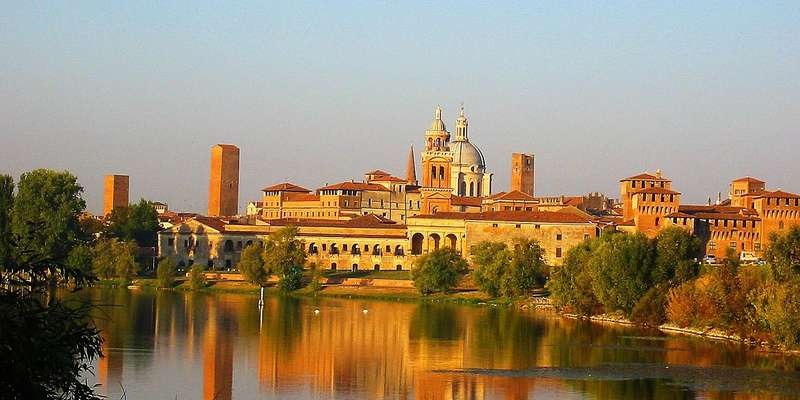- Home
- Useful Tips
- Understanding Mantua's urban...
Few travelers realize Mantua's piazzas form a living timeline of urban evolution, yet most miss the subtle clues that reveal 700 years of architectural history. Over 80% of day-trippers cluster around Piazza Sordello, unaware they're standing atop the medieval city's original marketplace or that the surrounding buildings showcase four distinct design eras. This oversight transforms what could be a profound cultural experience into another checklist item, leaving visitors with generic photos but no real understanding of how Mantua's urban fabric developed. The frustration compounds when travelers later discover they walked past rare examples of Lombard Gothic porticos or early Baroque facades without recognizing their significance. With limited time and no expert guidance, even historically-minded visitors struggle to connect Mantua's scattered architectural masterpieces into a coherent narrative about one of Italy's most perfectly preserved planned cities.


Why Mantua's piazza layout confuses first-time visitors
Mantua's seemingly haphazard piazza arrangement actually follows a deliberate medieval expansion pattern that most modern maps fail to explain. The city grew outward from Piazza Sordello in concentric rings, with each new square serving specific civic functions as the Gonzaga dynasty's power increased. What appears as architectural chaos today - Renaissance facades abutting medieval towers near Baroque churches - reflects centuries of strategic urban planning. Local historians note that the angles of Piazza delle Erbe's porticos intentionally align with summer solstice sunlight, while Piazza Broletto's offset position marked the 13th-century city boundary. Without this context, visitors miss how Mantua's rulers used piazza designs to demonstrate political authority through urban space. The key lies in observing ground-level details: cobblestone patterns change at original district borders, and building materials shift where medieval walls once stood.
Decoding architectural eras in three essential piazzas
Piazza Sordello's layered history becomes legible when you know to examine window shapes - the pointed arches of Palazzo Ducale's earliest sections contrast sharply with later rectangular Renaissance windows added by Leon Battista Alberti. Moving southeast to Piazza delle Erbe, the 15th-century clock tower's mix of brick and marble reveals how Mantua transitioned from fortress city to cultural capital. Local architects suggest standing near the rotary to view all four centuries of development simultaneously: medieval vaults beneath the Torre dell'Orologio, Giulio Romano's Mannerist distortions at Casa del Mercante, and the neoclassical Teatro Bibiena's curved facade. For Baroque influences, Piazza Mantegna offers masterclass in theatrical urban design - the Basilica di Sant'Andrea's towering facade was strategically positioned to dominate sightlines from all approach roads, a power move by architect Leon Battista Alberti.
When to visit for crowd-free piazza exploration
Mantua's piazzas reveal their secrets most clearly during the golden hour before sunset, when angled light accentuates architectural details and day-trippers have departed. Locals know midweek mornings between 9-11am offer ideal conditions for studying Piazza Sordello's pavement inscriptions, as cleaning crews remove market stalls to reveal medieval merchant marks. The secret month is November - tourist numbers drop by 60% compared to October, yet temperatures remain mild enough for comfortable courtyard-hopping. For photographers, dawn in late April provides magical conditions when pearly mist rises from the Mincio River, softening the Renaissance lines of Palazzo Te's satellite piazzas. Savvy visitors coordinate with Mantua's academic calendar too; university exam periods in February and June mean student-filled cafes provide lively backdrops without overwhelming the squares.
Free resources for self-guided piazza discovery
Mantua's civic museums offer an often-overlooked free asset: downloadable overlay maps that superimpose historical city plans on modern piazza layouts. The tourist office's 'Piazza Detective' pamphlet (available in English) teaches visitors to spot telltale signs like weathered column bases that mark original Roman forum boundaries. For independent explorers, local historians recommend starting at the InfoPoint near Rotonda di San Lorenzo to borrow augmented reality tablets that reconstruct lost medieval structures in their proper piazza positions. The diocesan archive permits free access to 18th-century veduta paintings that document vanished architectural features - compare these with present-day views from identical vantage points. Evening passeggiata walks (6-7pm) become impromptu history lessons when you follow elderly residents who point out where their grandparents remember horse markets and religious processions transforming piazza functions seasonally.



